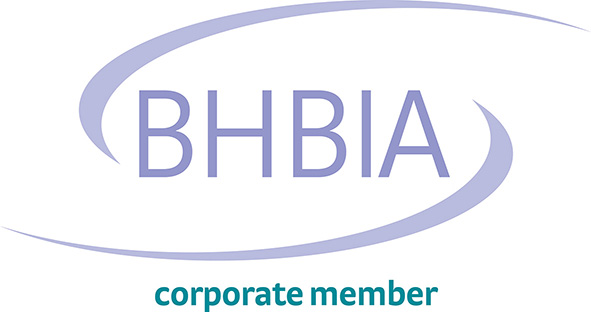Market Research Glossary
Market Research Glossary
There are currently 60 names in this directory beginning with the letter E.
E-Spread
Excess spread is the surplus difference between the interest received by an asset-based security's issuer and the interest paid to the holder.
E-Tailer
An e-tailer is a retailer that primarily uses the Internet as a medium for customers to shop for goods and/or services provided.
Econometrics
It is the analysis of economic systems containing supply and demand data using statistical models.
Edit Instructions
The edit instruction creates the formatted output by filtering the data through the mask.
Editing
It involves examining each completed questionnaire to ensure that the proper sequence of questions has been asked, the answers are clear and consistent and they have been correctly marked.
Effect Variable
Usually denoted as y, a variable that is influenced to some extent by one or more other (independent) variables.
Efficiency
Efficiency signifies a peak level of performance that uses the least amount of inputs to achieve the highest amount of output.
Elasticity
Elasticity is a measure of a variable's sensitivity to a change in another variable, most commonly this sensitivity is the change in price relative to changes in other factors.
Electroencephalogram (EEG)
Electro-encephalo-graphy literally means writing of the electric activity of the brain. It is an imaging technique using electrodes placed on the scalp, which captures, amplifies and records the electric signals emitted by neurons in the brain.
Electronic Customer Relationship Marketing (eCRM)
Electronic CRM concerns all forms of managing relationships with customers through the use of information technology (IT). eCRM processes include data collection, data aggregation, and customer interaction.
Electronic Data Interchange (EDI)
Electronic data interchange (EDI) refers to transaction of business documents in a standard electronic format between business partners.
Electronic Data Processing (EDP) Systems
Electronic data processing (EDP) can refer to the use of automated methods to process commercial data.
Element Sampling
Element sampling, or direct element sampling, is a sampling method whereby every unit (i.e. person, organisation, group, company etc.) has an equal chance of being selected to be included in the research sample.
Eligibility Criteria
are specified characteristics that potential participants must possess in order to be involved in a particular research project.
Eligible Respondent
It is a person who meets certain criteria set for a particular study and thus qualifies to be included in the study. Respondents may be qualified on characteristics such as age, income, brand used etc.
Enabling Techniques
Enabling techniques allow participants to say more in response to a question than they would spontaneously - sometimes also allowing the respondent to project opinions that may be considered shameful or negative through using an imaginary person or situation.
End Piling
It is a phenomenon where many survey responses fall into just a few categories at the end of a measurement scale.
Enumeration Districts (EDs)
Areas that are defined by the Census and generally contain 500 inhabitants.
EPOS Data
It is electronic point of sale data and it measures sales of products as they are being paid for by consumers. Error see total error.
Epsem Sample
EPSEM refers to an equal probability of selection method. It is not a specific sampling method such as systematic sampling, stratified sampling, or multi-stage sampling.
Equivalent Form Reliability
A testing method using two similar instruments to obtain the same or very similar measurements of a single object.
Error
In marketing and survey research, sampling error occurs because we measure components of a sample of the population instead of the whole population.
Error Checking Routines
Computer programs that accept instructions from the user to check for logical errors in the data.
ESOMAR
It is the world association of research professionals. Founded in 1948 as the European Society for Opinion and Marketing Research - ESOMAR unites 4,000 members in 100 countries, both users and providers of opinion and marketing research.
ESOMAR/ARF
The most important guidelines for researchers using the Internet are those provided by ESOMAR and ARF. These rules include guidance on providing Privacy Policies, of the special rules for interviewing children, and the need to avoid spam. The guidelines can be downloaded from ESOMAR.
Ethnography
Ethnography is the branch of anthropology that involves trying to understand how people live their lives.
Evaluate Research
Evaluation research is the systematic assessment of the worth or merit of time, money, effort and resources spent in order to achieve a goal.
Event (simple)
A sample’s subset. Events that are simple contain only a single outcome as a result of that event. An example would be in rolling a die, only a single outcome is allowed, this set of outcomes consists of six simple events (1, 2, 3, 4, 5, 6).
Evoked Set
a small number of brands that become acceptable alternatives in a buyer's purchase decision.
Exchange
An exchange is a marketplace where securities, commodities, derivatives and other financial instruments are traded.
Executive Interviews
are interviews with business people or experts within a particular field. Executive interviews are often used where the majority of knowledge of a subject is held by a minority of people.
Exhibits/Exhibit Cards
Printed cards, pictures, statements, actual products or advertisements given or shown to a respondent during the course of an interview, and usually relating to specific questions within the questionnaire.
Expected Value
in a cross-tabulation is the number of objects one would expect to find after multiplying the probabilities of the row and the column in the table (which may be different to the observed value).
Experience Survey
It is a survey involving participants who have knowledge of a particular situation.
Experiencing Focus Groups
Qualitative research that allows clients to observe and hear consumer’s thoughts and opinions regarding the client’s product or service.
Experiment
It is the process of manipulating one or more independent variables and measuring their effect on one or more dependent variables, while controlling for external variables.
Experimental Design
It is a set of experimental procedures specifying: the test units, sampling procedures, independent variables, dependent variables and how external variables are to be controlled.
Experimental Effect
The result that occurs to the dependent variable after the treatment variable has been altered.
Experimental Error
It is the error caused by the conditions of the experiment itself and it creates uncertainty that the observed effects may not be due to the manipulation of the independent variable.
Experimental Treatments
are the different conditions created by manipulating the independent variable.
Experimental Unit
The experimental unit is the entity a researcher wants to make inferences about (in the population) based on the sample (in the experiment).
Expert Opinion Survey
It is a form of exploratory research that involves discussing a research problem with someone (or a group of people) with experience on a particular subject.
Exploratory Focus Groups
Exploratory focus groups are a form of exploratory research. They are common as they help to discover where people stand on an issue and there are enough people within the exploratory focus group to gain a variety of opinions in a short space of time.
Exploratory Research
refers to the initial investigation of a problem that uses unstructured techniques (such as group discussions or in-depth interviews) in order to develop hypotheses and/or understand a problem further.
Exponential Smoothing
It is a statistical technique that calculates a moving average where the most recent data are given a different weight to earlier data.
Expressive Drawing
A qualitative technique in which the moderator asks the participants to illustrate their feelings toward a particular product or service by creating a picture.
Extended Group Discussion
It is a group discussion that has been designed to last around 3-4 hours (compared with the usual time of around an hour and a half).
Extended Use Test
A home use test involves participants evaluating products in their own homes, or more generally, in a natural usage environment. The purpose of the test is to make an evaluation of a product after more experience with it than just some initial use.
External Stimuli
refers to a personal perception experienced by the consumer, such as hunger, thirst, and so on. External stimuli include outside influences such as advertising or word-of-mouth.
External Validity
It is the extent to which experimental results can be projected to a population of interest.
External Variables
are factors that are not manipulated as part of an experiment, but they may exert some influence on the dependent variable under study.



